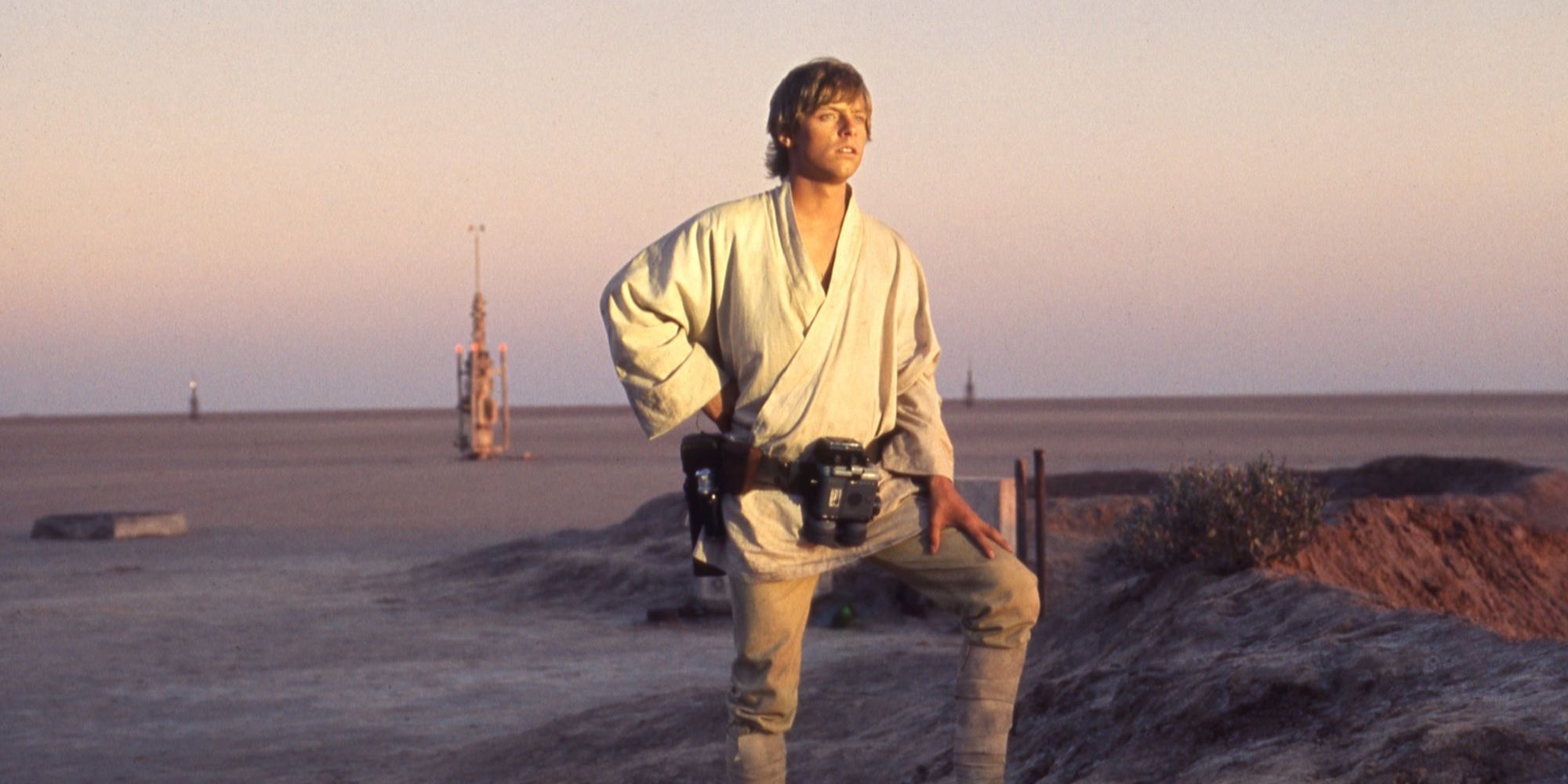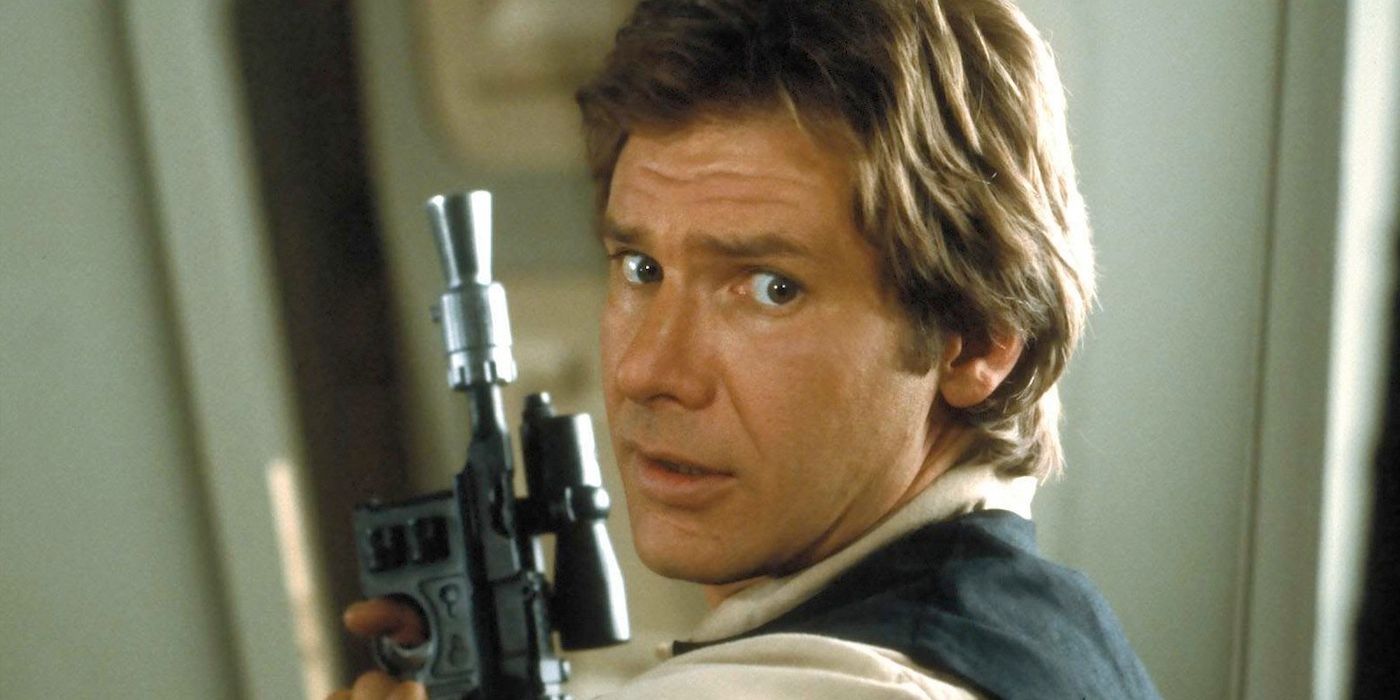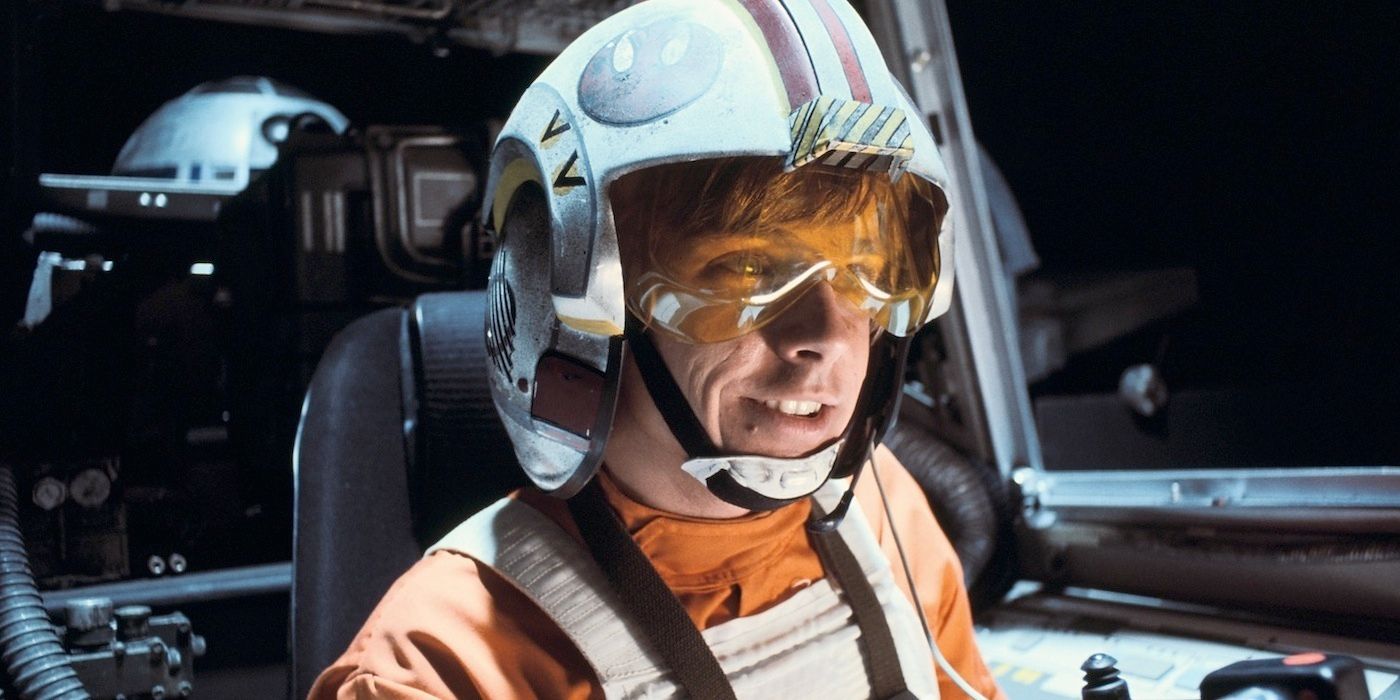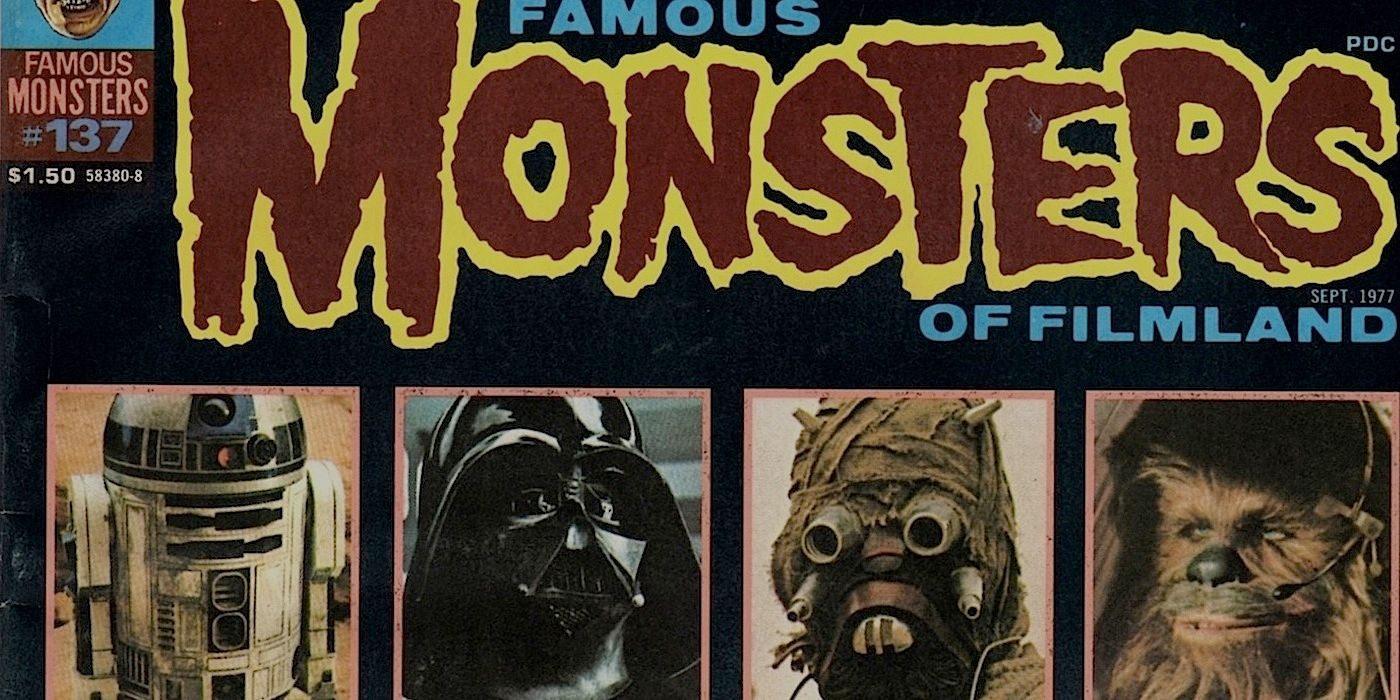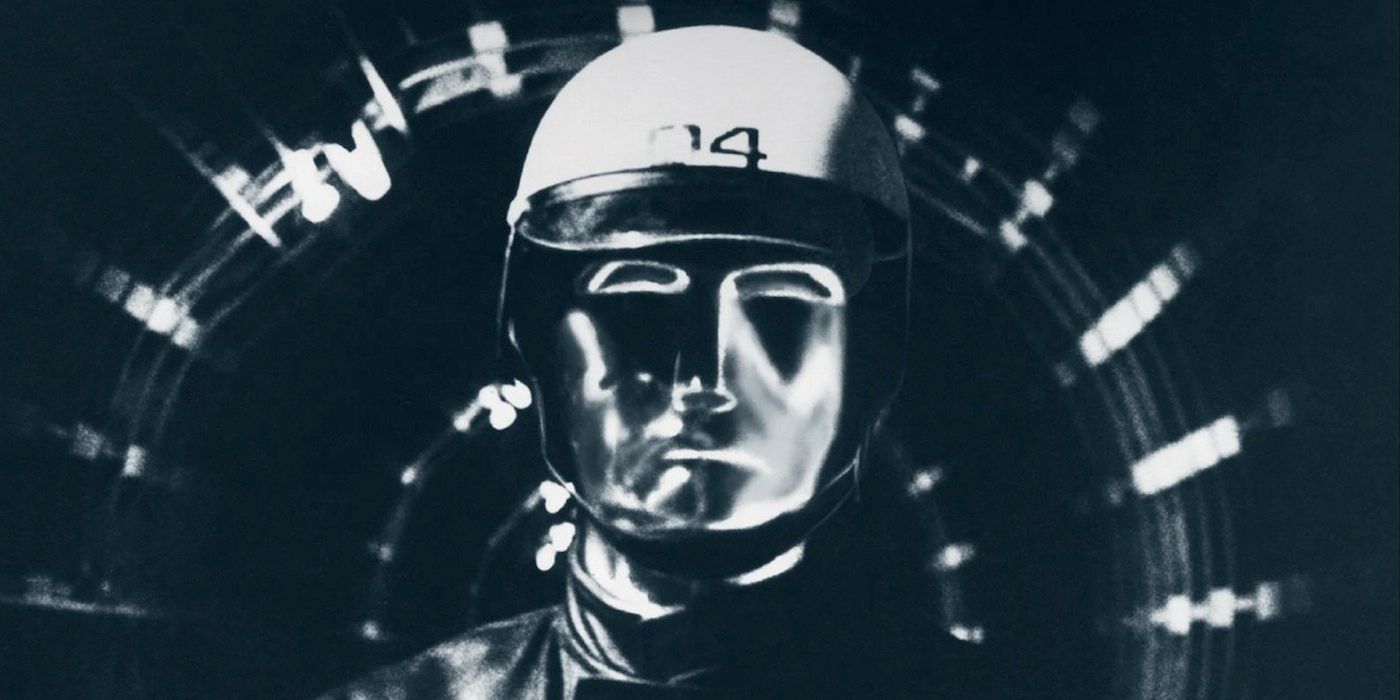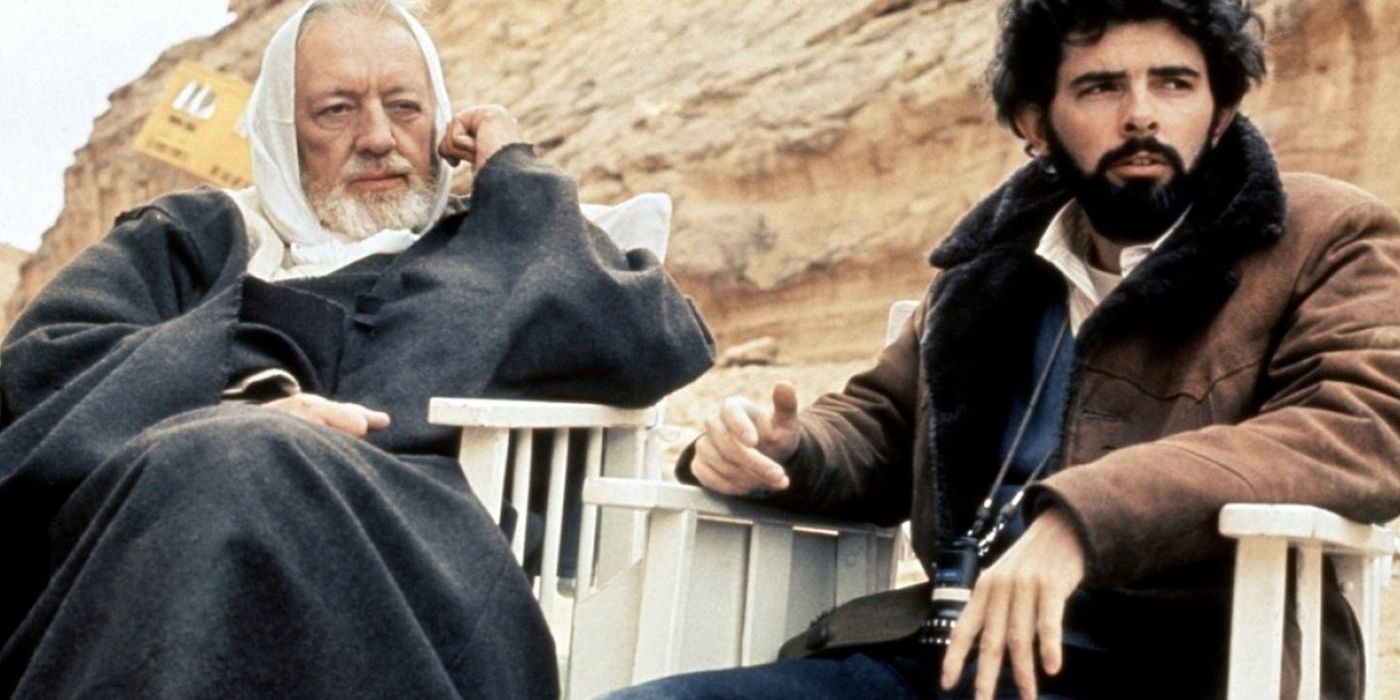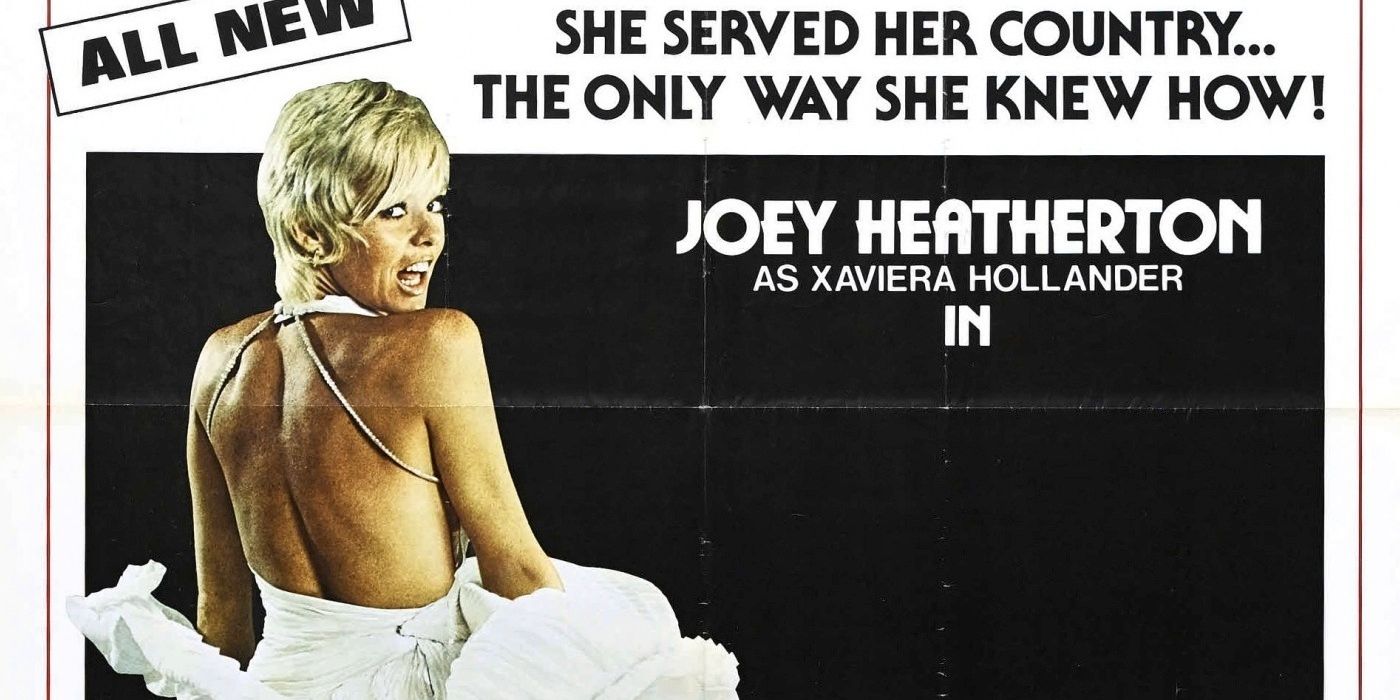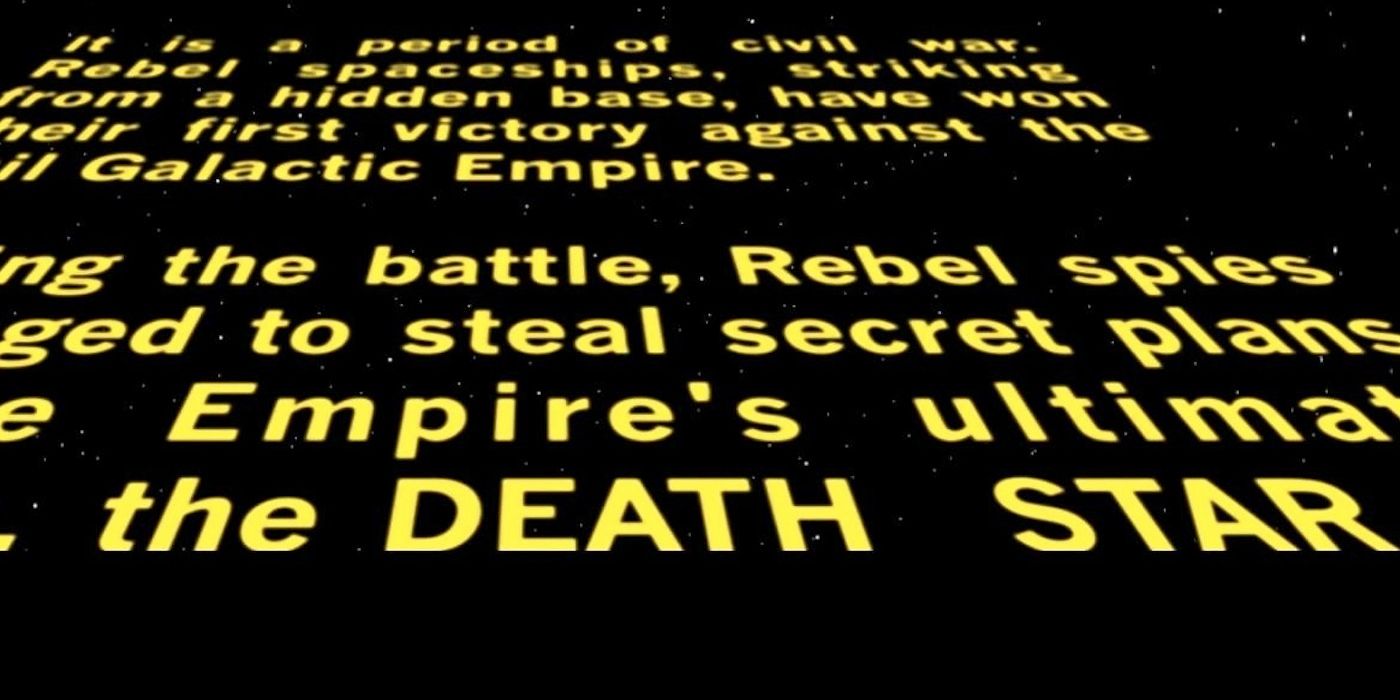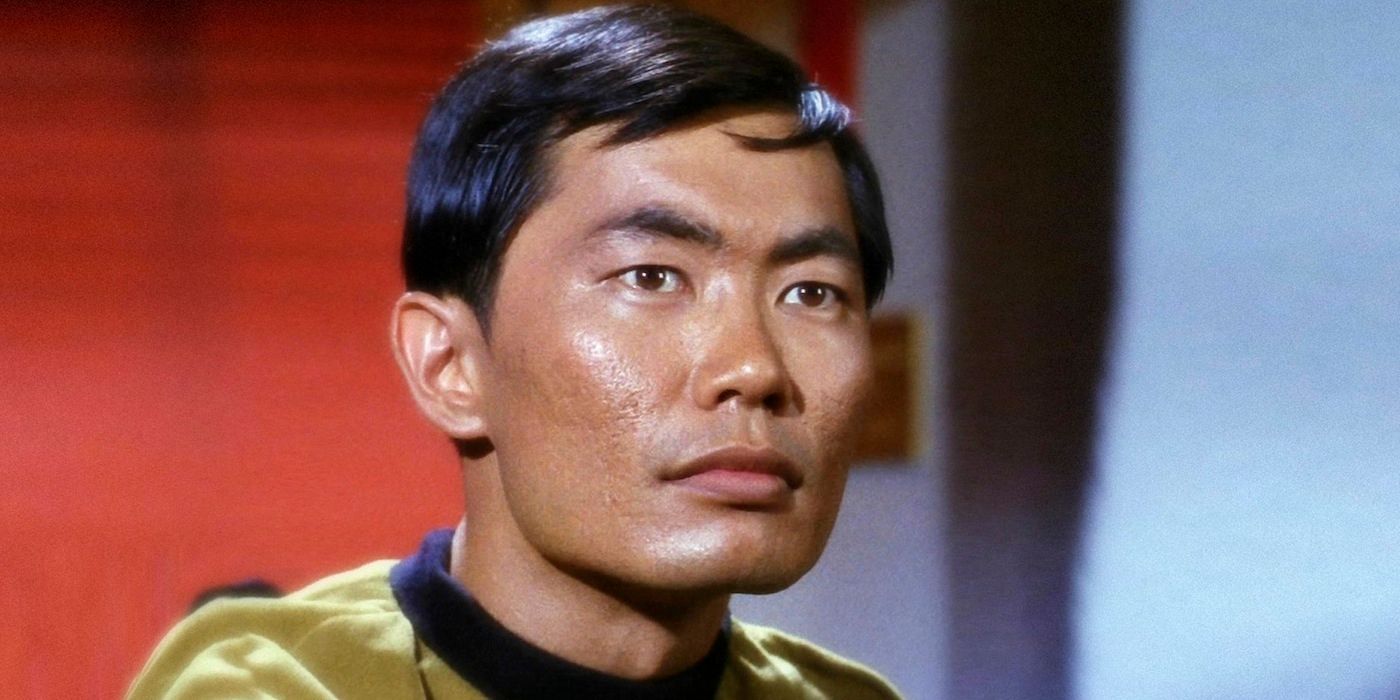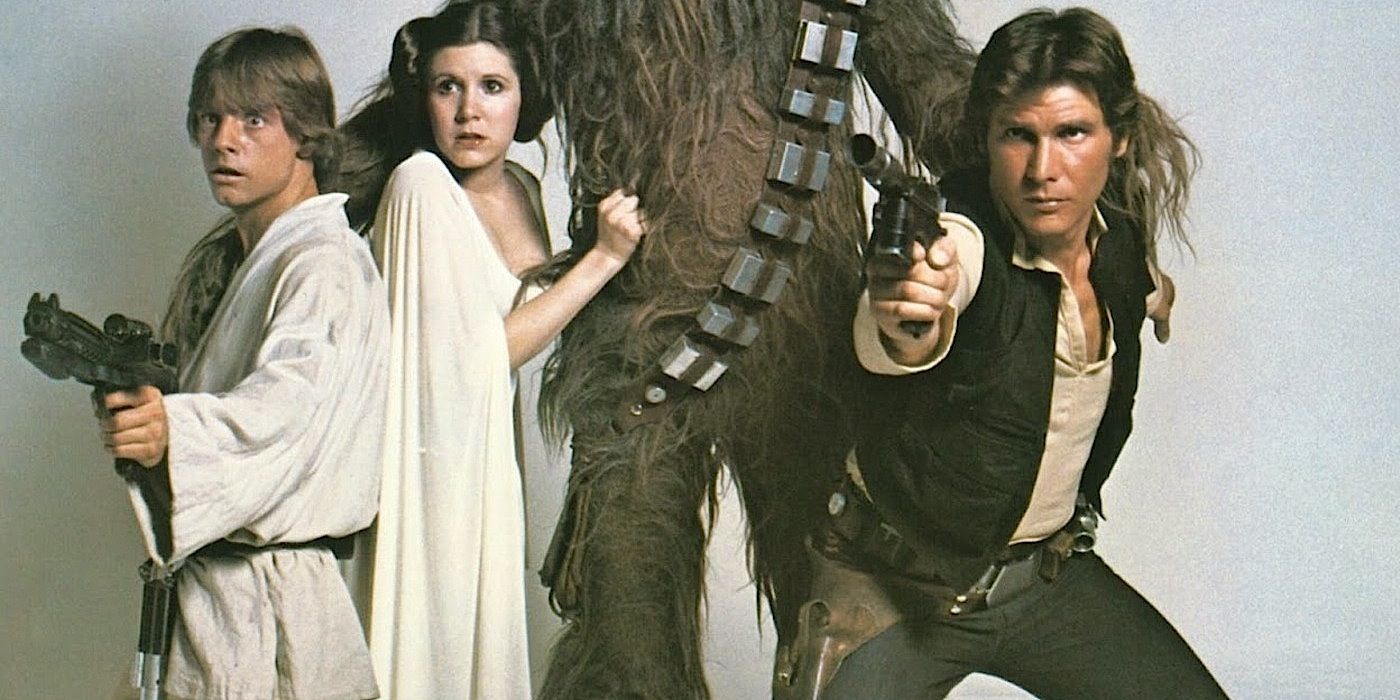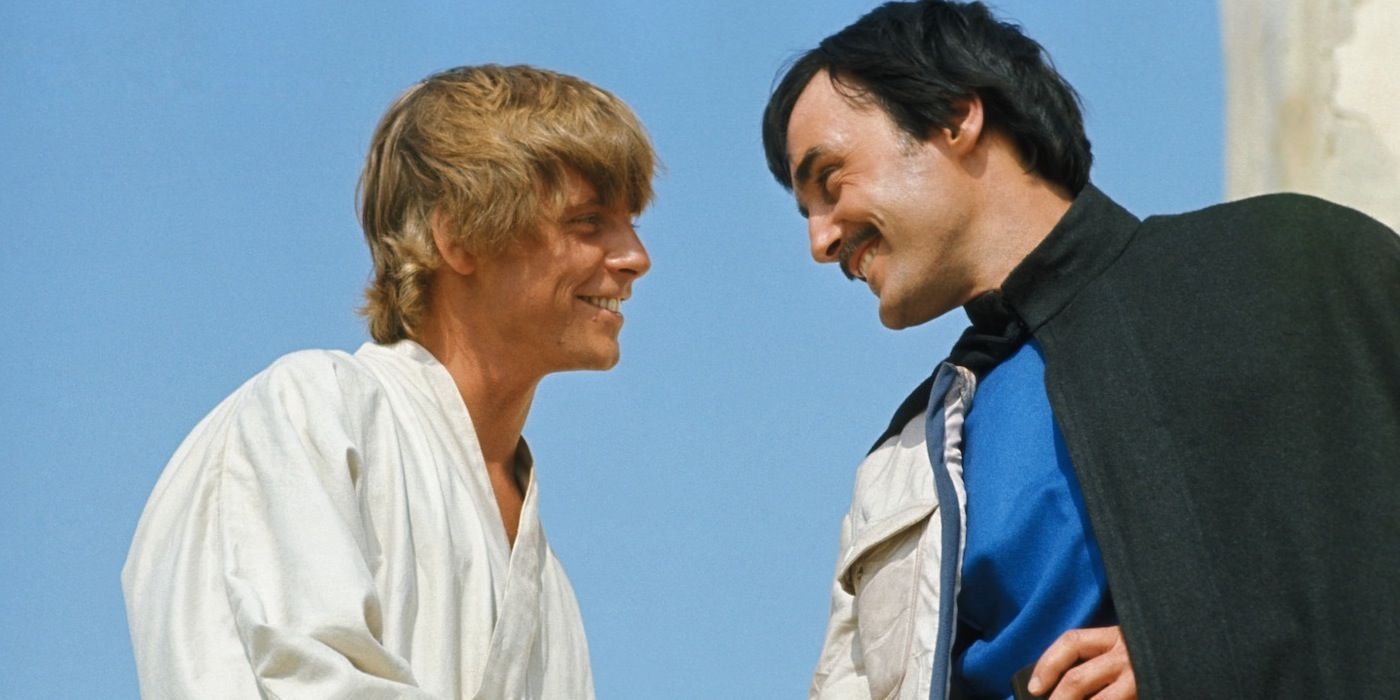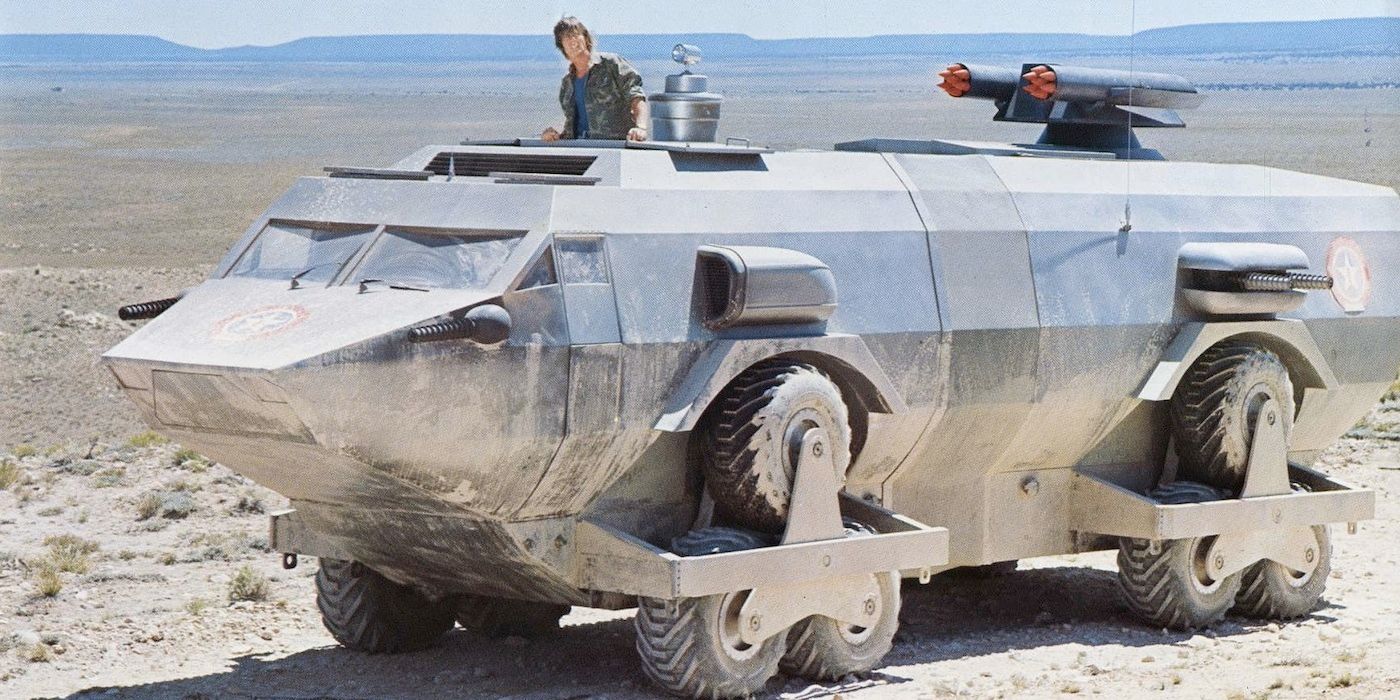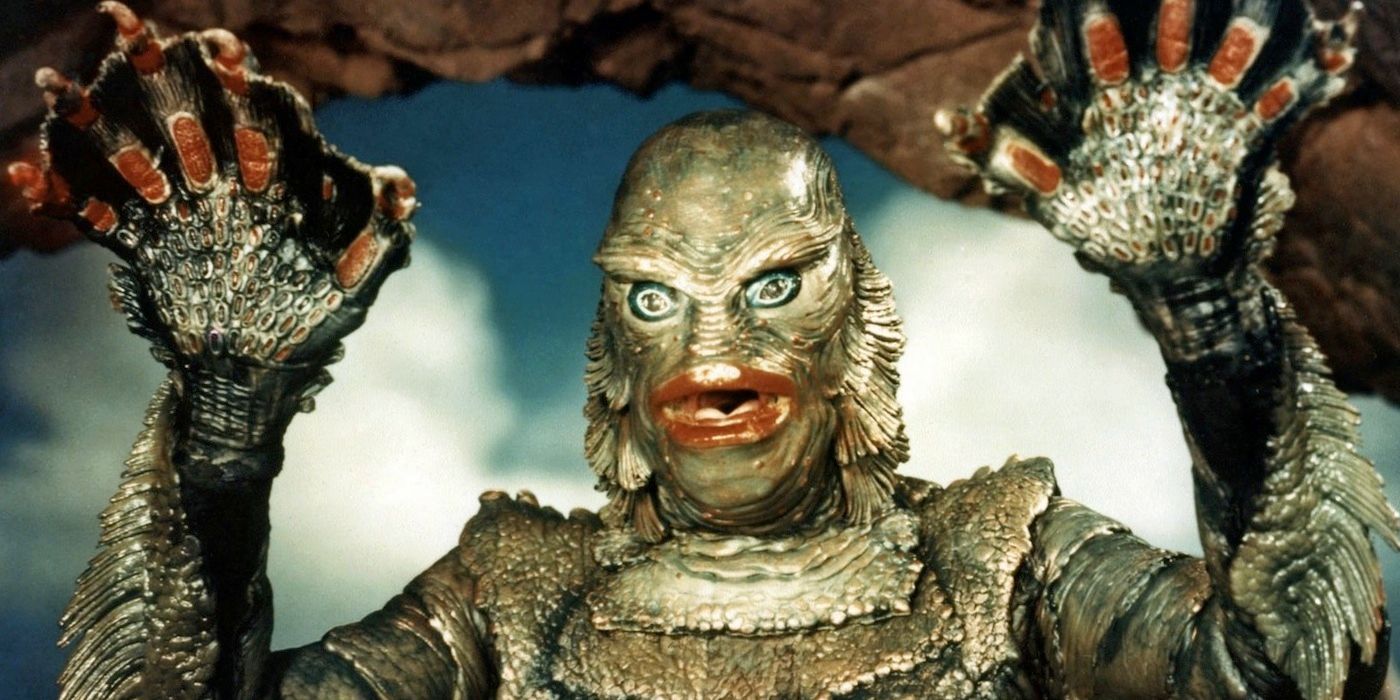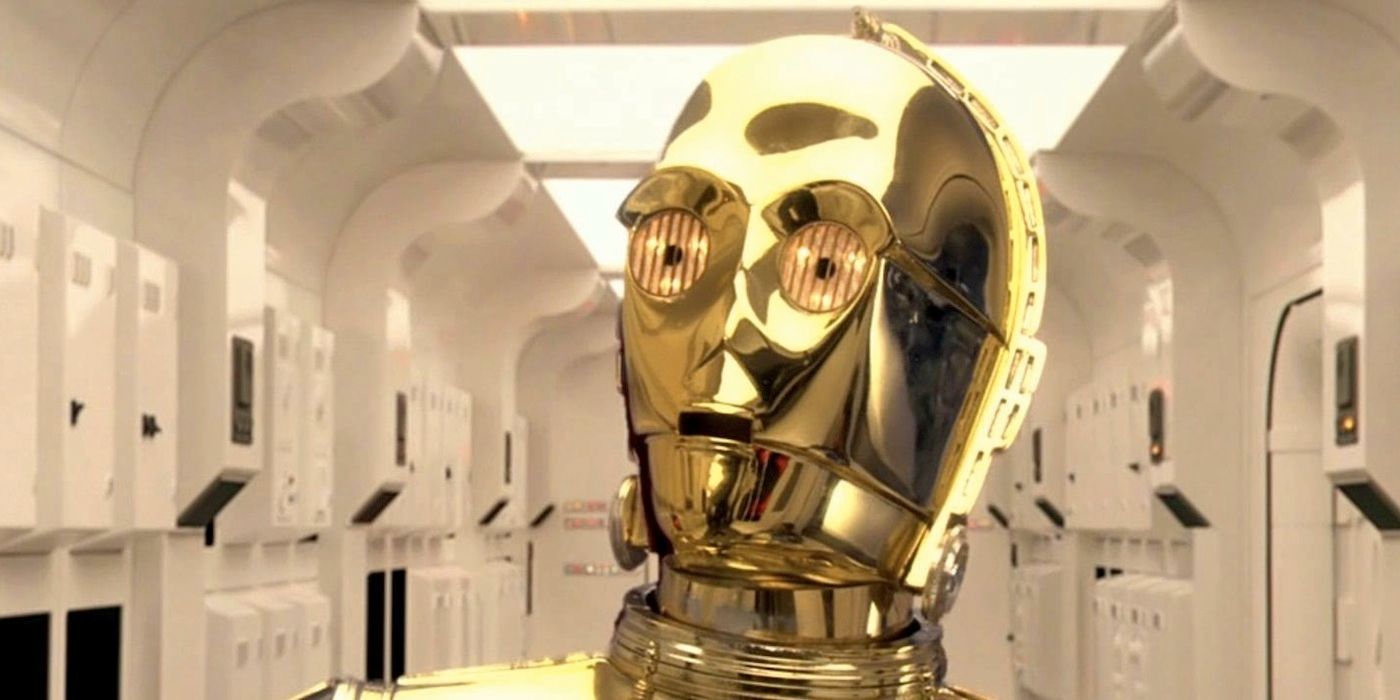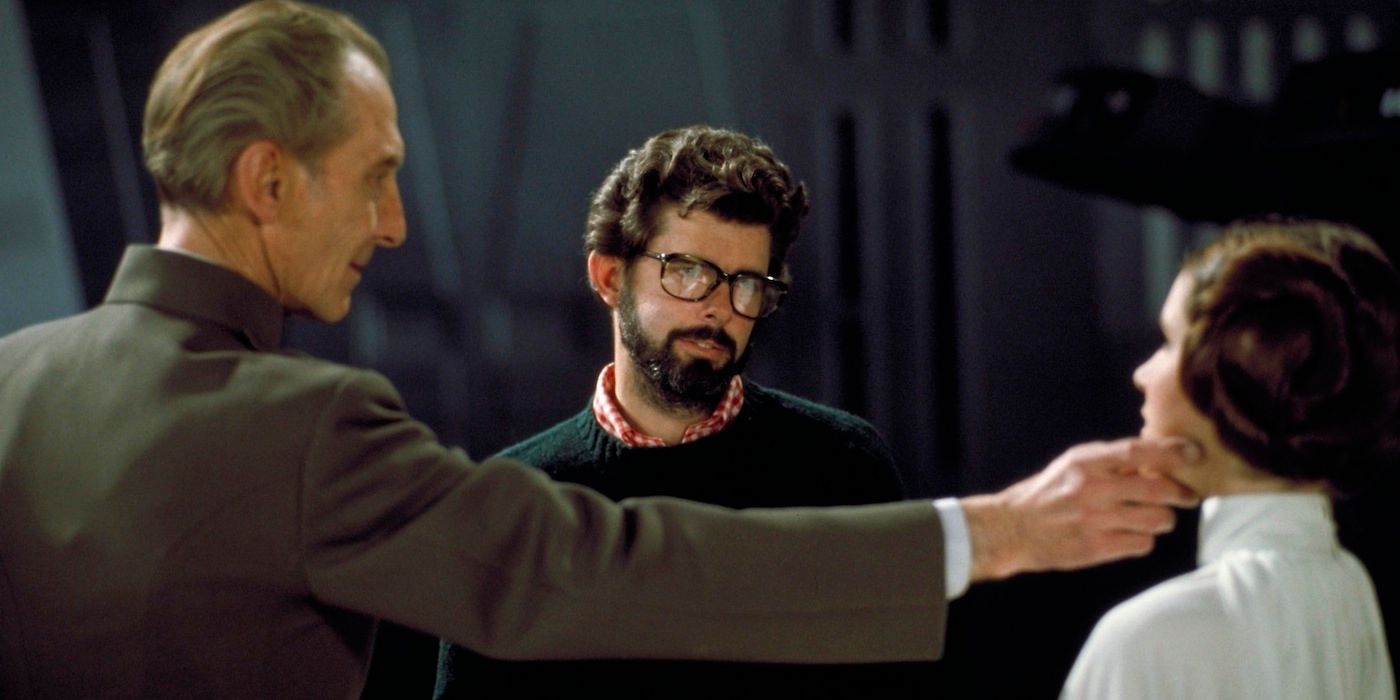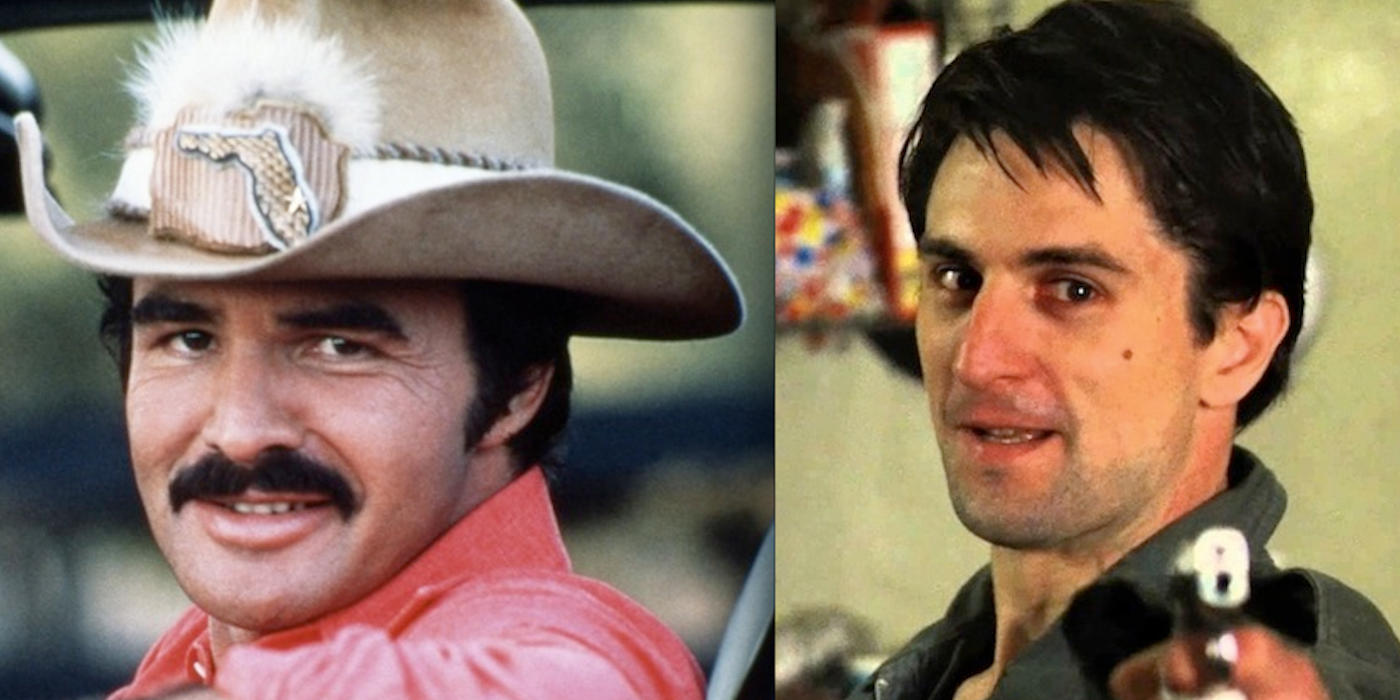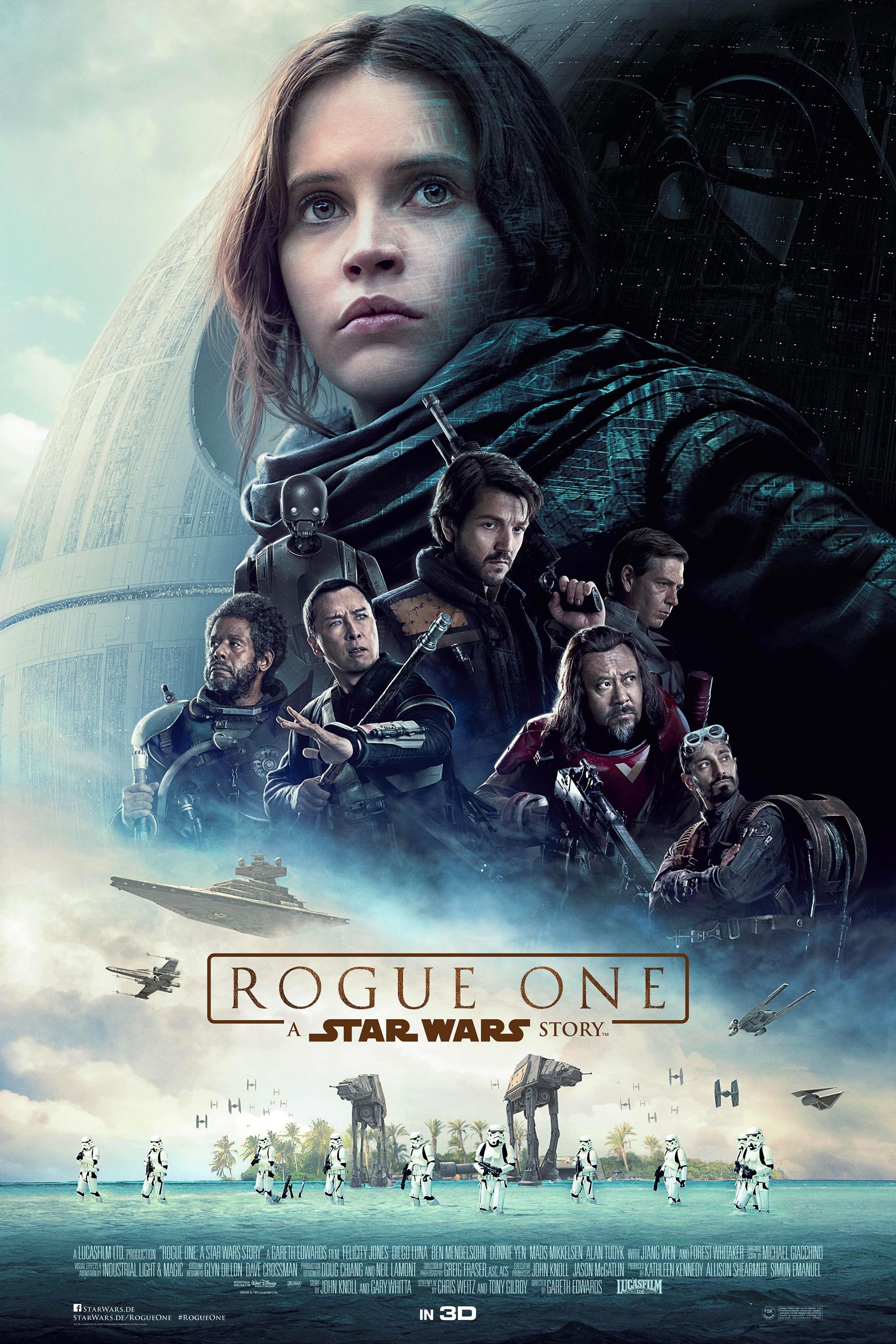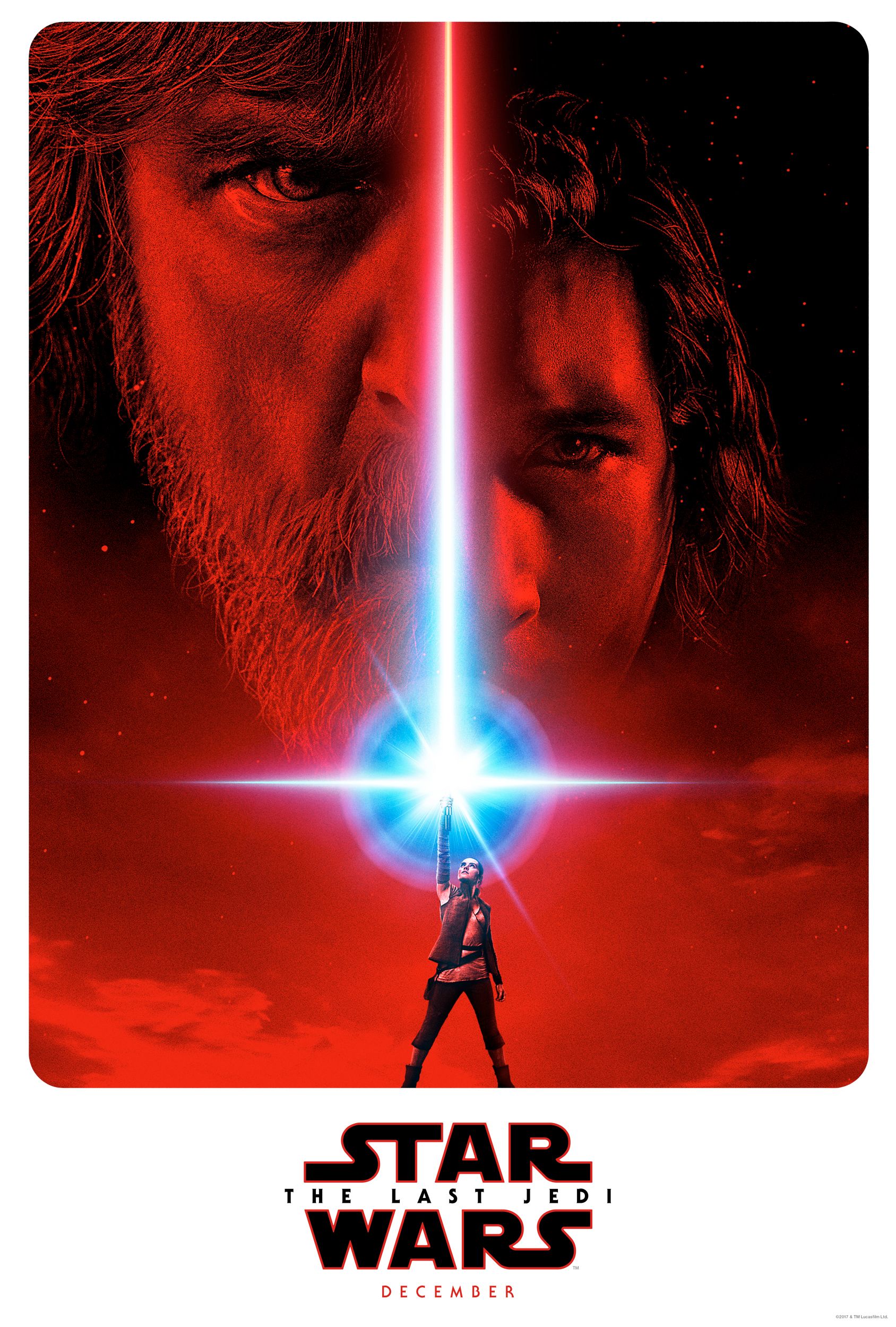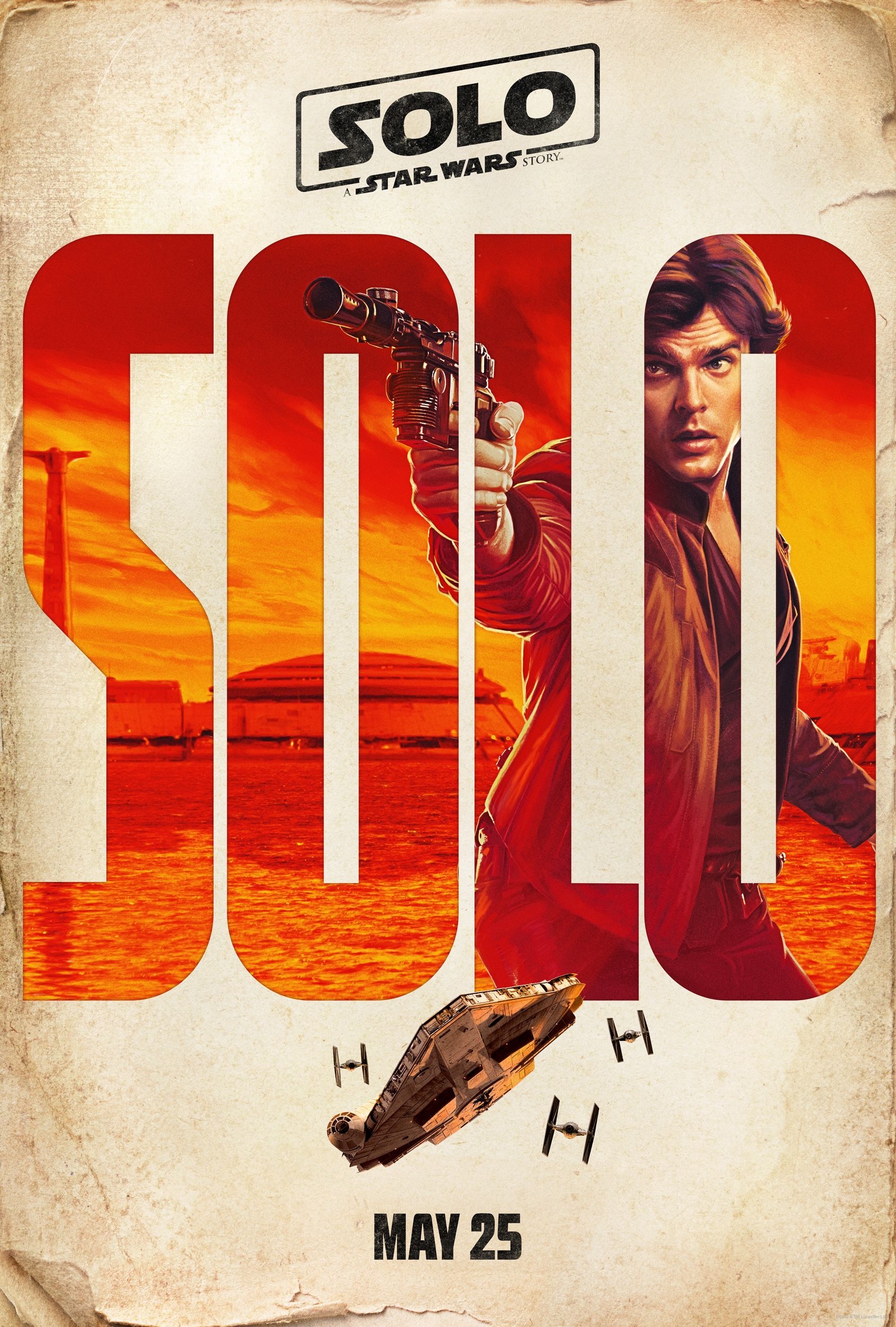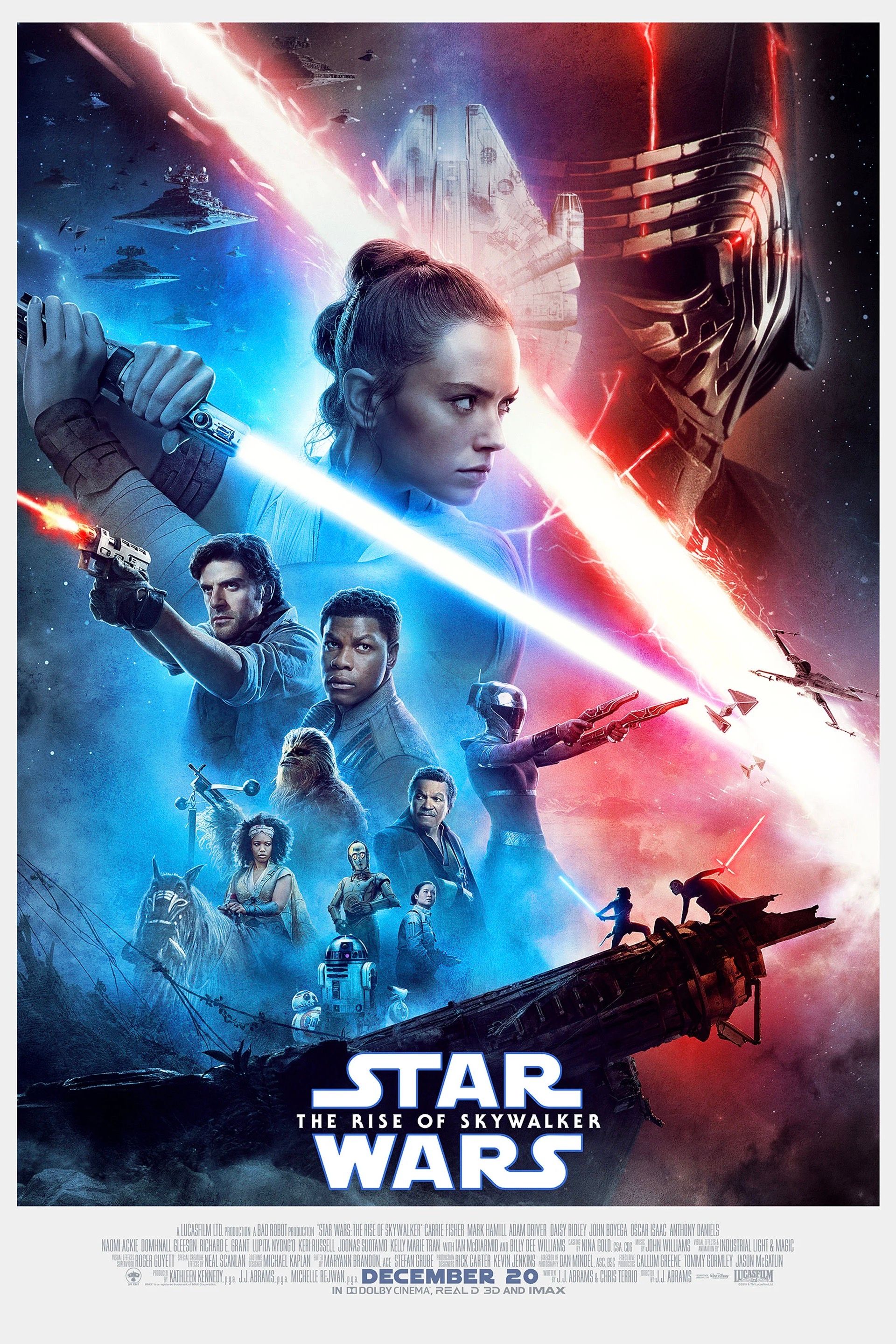A long time ago — 1977, to be exact — the first Star Wars movie opened in theaters across the planet. A couple of light years away from being accorded the more cumbersome title Star Wars: Episode IV — A New Hope, Star Wars quickly became the top-grossing film in Hollywood history (surpassing Jaws, which had set a new record just two years earlier) and significantly inspired a whole generation of filmmakers and fans. The movie also became a cultural touchstone and a font of trivial pursuits-- not to mention that it launched a media and merchandising empire.
Interest in everything regarding the genesis, production and influence of the film remains unabated to this day. Here, then, are a few facts that haven’t been as widely acknowledged as some of the more omniscient tidbits surrounding the saga. Check out these 15 Things You Didn't Know About The Original Star Wars.
15. Mark Hamill Is A Major Sci-Fi Nerd
Before Star Wars made him an overnight star, 25-year-old Mark Hamill had spent the previous seven years working exclusively on television, appearing in guest-starring spots on the likes of Night Gallery, The Bill Cosby Show, and The Partridge Family. He also co-starred with Gary Busey on the short-lived — very short-lived, as in eight episodes — sitcom The Texas Wheelers. But like any young guy into comic books, Hamill got excited when he heard about a new science fiction epic about to be filmed.
“I thought if they were making a big space fantasy movie, I’d be satisfied just to watch part of it being shot,” he stated in an interview. “I even asked my agent if she could get me onto the set so I could see how some of the special effects were being done.”
Needless to say, Hamill ended up doing a lot more than just watching.
14. Early Fans Misunderstood The Plot
Forrest J Ackerman, the beloved editor of the influential Famous Monsters of Filmland (Steven Spielberg, Peter Jackson, and Guillermo del Toro are among those who grew up devouring every issue), was a huge fan of Star Wars. He repeatedly plugged it on the magazine’s cover, penned countless articles on the phenomenon, and even sponsored a reader contest.
Still, like everyone else, Forry (as he was called by his fans) didn’t know much about the picture before its release, and the amusing blurb that appeared in a September 1976 “coming attractions” article wasn’t entirely accurate: “STAR WARS, starring Alec Guinness, will be a 21st-Century-Fox extravaganza costing $8 million and telling the tale of a retired general who once masterminded great galactic battles.” At least the next bit was correct: “Space aliens will be created by Stuart Freeborn, who did the marvelous ape makeup for 2001.”
Incidentally, this description was immediately followed in the preview article by this tidbit: “CLOSE ENCOUNTER WITH THE THIRD KIND deals with a menace from space.”
13. Lucas Isn't A Film Director
It’s no secret that George Lucas has never been comfortable as a director. He tends to be especially reticent around actors, which led Richard Dreyfuss, the star of Lucas’ 1973 classic American Graffiti, to once quip that he worked on the film for almost a month before he realized the director could speak English.
Of course, both American Graffiti and his previous picture, 1971’s THX-1138, were small scale compared to the enormity of Star Wars. As Lucas stated in an interview at the time, “I found the experience [of directing] excruciatingly painful, and I’ve discovered what I knew all along: I am not a film director. I am a film maker.”
Lucas’ reluctance to return to the director’s chair helps explain why he handed over helming duties to Irvin Kershner for The Empire Strikes Back and Richard Marquand for Return of the Jedi — indeed, it briefly looked like he might make a clean break from big-budget Hollywood moviemaking. As he confided in another interview, “I want to go back to what I was exploring in film school. A combination of visual tone poems and cinema verite. They’ll have people, but no plots or characters. I like to play with pure film.”
Alas, Lucas’ dreams of being another Stan Brakhage or Maya Deren never came to fruition — the continued success of the Star Wars and Indiana Jones franchises helped see to that.
12. Alec Guinness Changed Obi-Wan
While Mark Hamill, Harrison Ford and Carrie Fisher were all allowed to alter their dialogue (especially after they complained to George Lucas about the clunky exchanges in his script), only Alec Guinness had a say when it came to fundamentally changing the character he was playing. In fact, he initially turned down the role of Obi-Wan Kenobi, feeling it wasn’t right for him.
Ben Kenobi was originally written as a deranged old man who only became more clear-headed as the story progressed. Guinness balked at this, and, not wanting to miss out on the services of an Oscar-winning legend, Lucas acquiesced to the actor’s demands that Kenobi be wise throughout.
Even that alternation didn’t prevent Guinness from later lamenting that he would be remembered more for this film than for other projects of which he was more proud. Yet regardless of his own personal feelings toward the material (“rubbish” was how he described Lucas’ dialogue), he proved to be an anchor on the set, inspiring his co-stars to attempt to emulate his professionalism.
11. It Was Too Violent For Scandinavia
It’s not exactly breaking news that American audiences have traditionally been far more comfortable with onscreen violence than onscreen sex — as writer-director Philip Kaufman famously stated when his 1990 film Henry & June became the first to receive the stigmatizing NC-17 rating despite containing no violence or gore, “You can cut off a breast but you can’t caress it.” In many other countries around the globe, the opposite holds true. Thus, when Star Wars and The Happy Hooker Goes to Washington were both released in the Scandinavian countries of Denmark, Norway and Sweden, their ratings were decidedly reversed.
The Happy Hooker Goes to Washington was a sequel to the 1975 hit The Happy Hooker. While Lynn Redgrave portrayed Hollander in the original, Joey Heatherton essayed the role in the sequel, which was rated R stateside for countless scenes involving women cavorting while topless. But in the aforementioned Nordic countries, the PG-rated (in most countries) Star Wars had a more restricted rating than The Happy Hooker Goes to Washington due to its violence.
10. Brian de Palma Rewrote The Opening Crawl
Star Wars fans are quite familiar with the story of how George Lucas and Brian De Palma held joint auditions when casting for, respectively, Star Wars and Carrie. William Katt, for example, was a finalist for the role of Luke Skywalker but ended up playing Carrie’s likable jock Tommy Ross instead. Similarly, Amy Irving tried out for Leia but was eventually cast by De Palma in the role of the wholesome Sue Snell.
Lucas held an early screening for De Palma, Steven Spielberg, and a handful of other friends and associates. Many in the room didn’t quite know how to respond once the lights went up. (Reportedly, Spielberg was the only one who recognized the picture’s enormous potential.)
What isn’t as well known is that De Palma actively had a hand in making Star Wars. One of his biggest gripes about the film was the opening text crawl, which proved to be not only needlessly verbose but also on the dry side. Deciding to help out his pal George, De Palma took that scrawl and helped reshape it into the more manageable intro that made it into theaters.
9. George Takei Reviewed The Movie
Achieving screen immortality thanks to his work as Hikaru Sulu on Star Trek, George Takei has also enjoyed fame as an iconic social media presence. The philosophical bent seen in many of his political posts on Facebook and Twitter also informed his opinion of Star Wars shortly after it was released. While labeling the film as “great fun” and admitting to being “swept up by the sheer romantic escapism of it all,” he also was “aghast at the phantasmagoric violence technology can place at our disposal,” segueing into a mention of the real-life nuclear initiatives being explored by both the United States and the Soviet Union.
Takei clearly had mixed feelings about the picture: “Star Wars is the most preposterously diverting galactic escapade and at the same time the most hideously credible portent of the future yet. It is more than science fiction; I think it is science fictitious reality... I hope the beauty of the effects didn’t narcotize our sensitivity to violence.”
He also didn’t think much of the main characters, describing Luke as “a pretty but easily led youth without any real philosophy to guide him,” Han Solo as “a thoroughly avaricious mercenary,” and Leia as “chilly.” Instead, he reacted more positively to R2-D2 and C-3PO: “They demonstrated real affection for each other and an occasional poutiness. They exhibited a sense of fidelity and constancy. The machines were humanized and the humans conversely seemed mechanical.”
8. The First Star Wars Club Cost $5 to Join
These days, there are seemingly as many Star Wars fan clubs around the world as there are midichlorians in Anakin Skywalker’s body. Some are official, some are not — at any rate, the proliferation is a far cry from the scene in ’77. While fan clubs began springing up almost instantly (such as The Royal Order of the Rebel Forces), there was only one officially sanctioned one — and it cost a mere $4.95 to join.
For less than a fiver, members would receive six newsletters (originally nameless, it would be later be called Bantha Tracks), a full-size poster of Luke barreling through the Death Star trenches, a large color photo of Luke, Leia, Han and Chewbacca, a wallet-sized photo of Luke, an embroidered “Official Star Wars Fan Club” patch to be sewn onto a jacket, an image of an X-wing fighter and a TIE fighter to be ironed onto a T-shirt, a self-stick color decal featuring a drawing by Ralph McQuarrie, an “Official Star Wars Fan Club” book cover, and a membership card that read, “Charter Member” and “May The Force Be With You.”
Incidentally, many of these vintage items are still available … on eBay, where they’ll cost you far more than $4.95.
7. Most Critics Loved It... Most
Star Wars was obviously a hit with audiences, as it quickly became the top-grossing film of the time. It was also a favorite within the industry, as evidenced by its 10 Academy Award nominations and six wins (seven, if we include the special achievement award for Ben Burtt’s sound effects). But how did it fare with the critics?
Very well, thank you. TIME magazine tagged it “The best movie of 1977.” Gene Siskel and Roger Ebert both included it on their lists of the year’s 10 best films, and the Los Angeles Film Critics Association voted it Best Picture over such favorites as Annie Hall and Julia.
Still, there were some notable dissensions among the ranks. Notorious curmudgeon John Simon, writing for New York magazine, griped that Star Wars was “as exciting as last year’s weather reports” and dismissed Harrison Ford as “adequate,” Mark Hamill as “uninspired” and Carrie Fisher as “wretched.” (Simon apparently had a bad 1977 — he also trashed Annie Hall, the Best Picture Oscar winner that was adored by practically everyone.)
Then there was Pauline Kael, reviewer for The New Yorker and often regarded as the most influential film critic ever to set pen to paper. Kael’s review was just as dismissive as Simon’s, though of course better written. She opined that the picture possessed “no lyricism … no emotional grip” and that “Lucas has got the tone of bad movies down pat.”
6. Biggs Darklighter Was Cut From The Movie
Since tie-in novelizations are often released before the films themselves, it’s not unusual for scenes to appear on the printed page that don’t make it onto the big screen. That was the case with Star Wars — released in 1976 under the title Star Wars: From the Adventures of Luke Skywalker, this paperback edition (credited to Lucas but actually ghostwritten by Alan Dean Foster) included the early sequence in which Luke hangs out with his best buddy Biggs while still stuck on Tatooine.
The scene was cut from the film during pre-production, so crestfallen fans could only imagine what this sequence looked like … at least until April 1978. That was when Random House published The Star Wars Storybook, which related the saga with accompanying photos from the film. And because that Biggs sequence was still included as part of the narrative, the slender hardcover book contained a couple of stills of Luke and Biggs together, well before they reunited to take on the Empire and its imposing Death Star.
5. The Studio Had No Faith In It
20th Century Fox wasn’t the first studio to get a crack at Star Wars — George Lucas initially took his idea to Universal and United Artists, both of which passed on financing the film. But just because Fox accepted it didn’t mean they were particularly gung-ho about the project.
In fact, the studio had more faith in its other science fiction flick of the period: Damnation Alley, a post-apocalyptic odyssey adapted from Roger Zelazny’s novel. Production woes led to the film being bumped from its December 1976 slot, but the studio still had faith in its pet project. That faith went out the window once Star Wars opened and studio suits realized they had been backing the wrong horse.
Scrambling to salvage what was becoming an increasingly unwieldy picture, Fox suits decided to make significant cuts. When Damnation Alley finally hit theaters in October 1977, reviews were brutal and audiences stayed away. To add insult to injury, Zelazny publicly lambasted the end result, as it differed significantly from his source material. All told, Damnation Alley cost approximately $17 million to produce and grossed only $8 million.
4. Luke's last name was originally "Starkiller"
In 1973, George Lucas first began jotting down notes for what would eventually become Star Wars (it was called Journal of the Whills at this early stage). It wasn’t until the following year that he was commissioned to write a proper draft, but, as with any piece of writing, it went through countless revisions (one bearing the name The Adventures of Starkiller Episode I: The Star Wars) before its creator felt it was ready.
It’s widely known that the character of Luke Skywalker was originally going to be called Luke Starkiller, but the reason for the name change is a sobering one. Reportedly, Lucas felt that such a violent moniker would lead to viewers conjuring up images of the murderous Charles Manson, who did indeed kill a star (Sharon Tate).
Other ideas proved to be equally interesting. Han Solo was originally envisioned not as a hunky human but as a green-skinned critter with a flat nose and gills (had Lucas just finished watching The Creature from the Black Lagoon on the late show when he came up with this version?). Lucas also toyed briefly with the idea of making the Luke character a female and, later, of making him a dwarf. Instead, he created Leia Organa and saved his heroic dwarf for Willow.
3. It Was A Pain to Play C-3PO
Shooting in the Tunisian desert was arduous for everyone involved, but Anthony Daniels had it especially difficult. The role of C-3PO required Daniels to don a 50-pound costume made out of aluminum, steel, fiberglass, rubber and plastic — between the weight and the heat, it’s no wonder he sweated off close to four pounds a day and repeatedly collapsed on the set.
It wasn’t just the sweltering heat that made the shoot so agonizing. As Daniels explained, “The weight of C-3PO’s fiberglass legs was in my feet, and the whole weight of the arms was in my thumbs. My shorts were made of plastic and could cut me like scissors. There were wheels inside the knees, and if I moved more than 30 or 40 degrees, they’d hit me across the kneecaps.”
On top of all this, the fiberglass in one leg shattered, sending shards into the actor’s foot. He couldn’t even sit down to take the weight off — since the outfit was rigid, he had to be propped up during breaks in shooting. It’s probably safe to say that no actor on the Star Wars set suffered as much for his art as Daniels.
2. George Lucas, the Generous
Today, George Lucas’ net worth is $4.9 billion. Much of that figure came from selling Lucasfilm and its assets to Disney, but the filmmaker was hardly a pauper before that blockbuster deal went down. But forget for a moment the sequels, the prequels, the toys, and everything else — exactly how much money did Lucas make from the release of just the first Star Wars picture?
Journalist Gerald Clarke reported what seemed to be the most thorough numbers, figuring that Lucas made approximately $51 million after the studio and the distributors all took their cut. But a lot of that amount went to taxes, and another significant chunk went to friends, employees and colleagues. For instance, he gave Carrie Fisher an additional $320,000 on top of the salary she had already received, and he even handed out roughly $6,000 apiece to all of his office employees.
After the smoke cleared, Lucas was left with $12 million, which he mostly invested in The Empire Strikes Back.
1. Burt Reynolds & Robert Deniro Almost Played Han
It’s well known that Christopher Walken was in the running to play Han Solo — Kevin Spacey even did a brilliant bit on Saturday Night Live in which he pretended to be Walken auditioning for the part. But while Lucas eventually went with the largely unknown Harrison Ford, the studio looked at most of the top stars of the day as well as relative newcomers who were already generating plenty of buzz.
Burt Reynolds, who along with Clint Eastwood was the decade’s biggest star, reportedly turned down the role, although with Smokey and the Bandit emerging as the second highest grosser of 1977 (under Star Wars, natch), it’s assumed he wasn’t exactly in tears over his decision. Other names tossed around included Jack Nicholson, Kurt Russell, Al Pacino, Bill Murray(!), Chevy Chase(!!), and, since Lucas briefly toyed with the idea of making the character black, Billy Dee Williams (who, of course, would later be cast as Lando Calrissian).
Perhaps most amusing of all was the consideration of Robert De Niro, who was rapidly establishing himself as an actor of extraordinary intensity with his acclaimed turns in Mean Streets, The Godfather Part II and Taxi Driver.
“You talkin’ to me, Skywalker? You talkin’ to me? I’m the only one here — well, me and the Wookie.”
---

